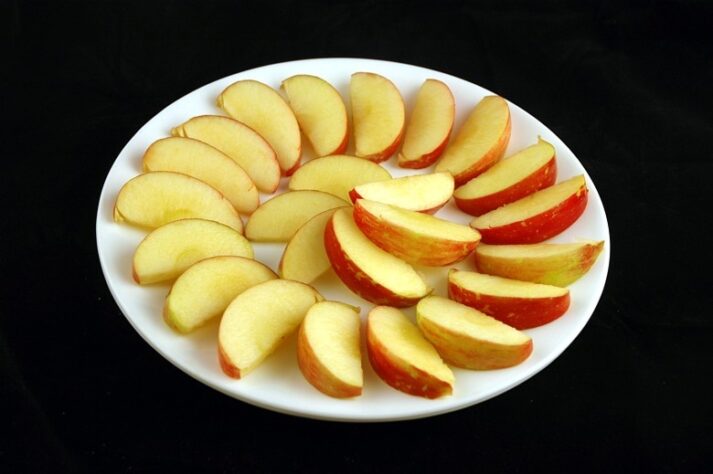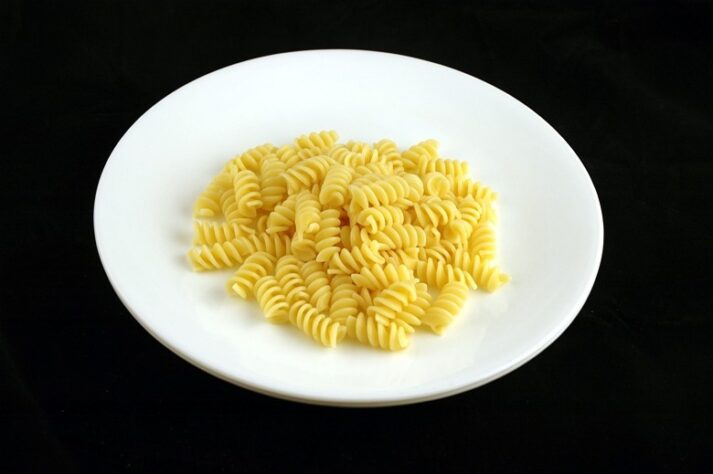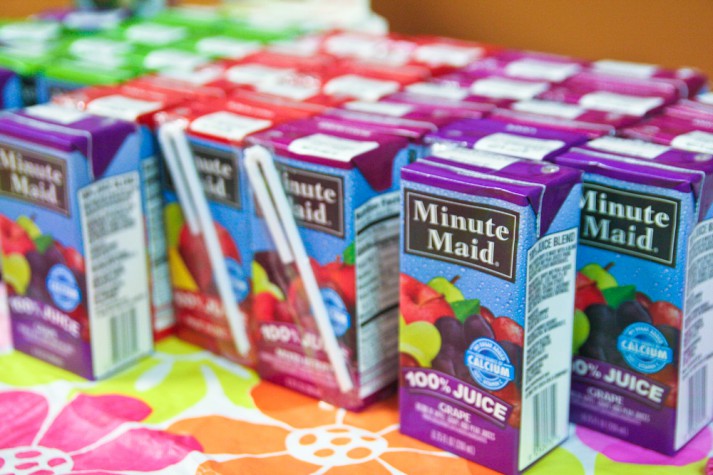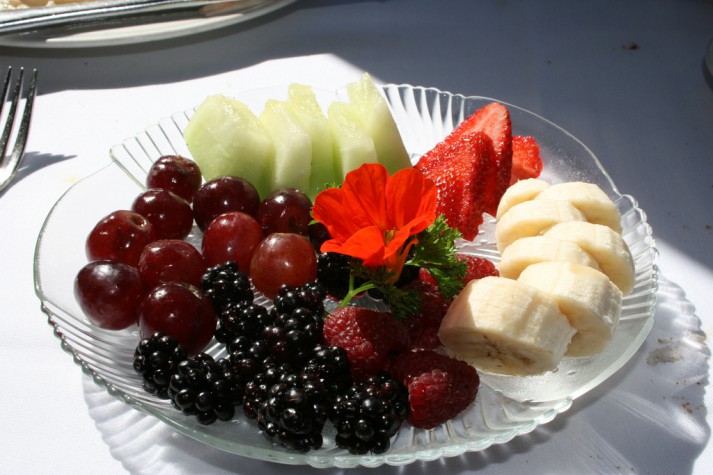This
post was originally published on
this sitehttp://chriskresser.com/

Although we have a lot to learn about food intolerances, ever-growing research proves that they aren’t psychological or make-believe. Read on to learn the differences between a true food allergy and a food intolerance, some examples of common food intolerances, and how healing your gut can, in some cases, alleviate the problem.
Food Allergy vs. Food Intolerance—They’re Not the Same
Food allergies are on the rise, especially in children:
- Between 1997 and 2011 food allergies increased by 50 percent in American children (1)
- Today, around 1 in 13 children and 1 in 25 adults in the United States suffer from a life-threatening food allergy (2)
In a true food allergy, a person’s immune system produces immunoglobulin E (IgE) antibodies in response to her consumption of a particular food. These IgE antibodies initiate a cascade of events that can affect the skin (hives), the respiratory tract (wheezing), and/or the GI tract (vomiting).
In severe anaphylactic cases, an allergic reaction can be life threatening if not treated immediately with epinephrine.
Even more common than food allergies, food intolerances are estimated to affect up to 20 percent of the population in industrialized countries. (3, 4, 5) Food intolerances are not IgE mediated and are thought to be caused by specific enzyme deficiencies, impaired food absorption, and other GI issues. (6) In many cases, other immunoglobulin antibody responses may also be involved (IgA and IgG)—but more on that later.
Food intolerances generally don’t trigger the dramatic or immediate reactions associated with food allergies, but they’re every bit as real, with varied symptoms like nausea, vomiting, respiratory problems, brain fogginess, and skin reactions such as eczema.
If unmanaged, food intolerances can have serious health consequences too. If you don’t know you have a food intolerance and keep eating the offending food(s), you increase your risk of developing an autoimmune disease, neurological disorders, and more. (7, 8, 9, 10)
Five Common Food Intolerances
Let’s explore some common food intolerances that affect millions of people.
1. Celiac Disease
Often confused with a wheat allergy, celiac disease (CD) is not an allergy but rather an autoimmune disease, characterized by an inflammatory immune response to wheat gluten, rye, barley, and related proteins. Affecting 1 to 5 percent of Americans, CD usually manifests as GI disturbances like abdominal pain and diarrhea, but many patients with CD have no GI symptoms and may not even know they have it. (11, 12)
These atypical, or “silent,” forms of CD are far from harmless. Silent CD is associated with higher rates of iron deficiency, anemia, osteoporosis, neurological symptoms, and a nearly fourfold increase in the risk of death. (13, 14)
2. Non-Celiac Gluten Intolerance
CD screening only tests for antibodies to a few components found in gluten, but people can react to many other components of wheat and gluten in a condition called non-celiac gluten sensitivity (NCGS). (15, 16, 17, 18, 19) No robust diagnosis yet exists for NCGS. The best clinical description is: “a reaction to gluten that resolves when gluten is removed from the diet, and CD and allergy have been ruled out.” (20)
Despite its inexact diagnosis, NCGS is real—and studies are proving it. Double-blind, placebo-controlled trials indicate that a subset of people who do not have CD or a wheat allergy can and do indeed react horribly to gluten when they don’t know whether they are being given gluten or not. (21, 22, 23)
Up to one in 20 Americans may have NCGS, which can affect the brain, skin, endocrine system, stomach, liver, blood vessels, and more. NCGS can produce a wide range of symptoms: (24, 25, 26)
- Bloating
- Abdominal pain
- Gas and related pain
- Diarrhea
- Constipation
- Tiredness
- Headache
- Anxiety
- Foggy mind
- Eczema
- Chronic fatigue
- Joint and muscle pain
- Asthma
- Depression
Unfortunately, many health professionals still don’t take NCGS seriously, which does a huge disservice to those suffering. In fact, NCGS, especially if undiagnosed, can be even more serious than CD. Epithelial damage to the gut, systemic immune activation, and systemic inflammation are all linked to NCGS. (27) By continuing to eat gluten, patients with NCGS are at higher risk of developing arthritis, thyroiditis, multiple sclerosis, ataxia, diabetes, and even amyotrophic lateral sclerosis (Lou Gehrig’s disease). (28, 29, 30, 31)
3. FODMAP Intolerance
Sometimes, people who think they are sensitive to gluten may actually be intolerant to FODMAPs, or fermentable oligosaccharides, disaccharides, monosaccharides, and polyols. FODMAPs, a type of carbohydrate, are found in many common foods besides wheat, including:
- High-fructose fruits
- Asparagus
- Brussels sprouts
- Garlic
- Onions
In the case of FODMAP intolerance, the GI tract isn’t fully digesting and absorbing these short-chain carbs, which are then fermented by gut bacteria, creating gas and increasing fluid movement into the large bowel. (32)
FODMAP intolerance is common in people with irritable bowel syndrome (IBS) and small intestinal bacterial overgrowth (SIBO). By adhering to a low-FODMAP diet, up to 75 percent of people have relief from functional gut disorder symptoms, especially IBS. (33, 34, 35, 36, 37). However, a low-FODMAP diet is not advisable long term because it can decrease microbial diversity and density of beneficial bacterial species. (38, 39)
4. Lactose Intolerance
Up to 65 percent of the world’s population—literally billions of people—may be lactose intolerant. (40) Lactase, the enzyme that digests the milk sugar lactose, is present in infants and young children, presumably to digest breast milk, but many people don’t maintain full lactase function beyond childhood. (41, 42)
Why Eat Dairy, Anyway?
Most iterations of the Paleo diet don’t include dairy. But, if well tolerated, dairy can be a nutritious and beneficial part of a Paleo template. If you’re not eating fish heads, bones, and skin, getting adequate calcium without dairy isn’t easy. Pastured dairy is a great source of fat-soluble vitamins A, D, and K2 and is a primary source of conjugated linoleic acid (CLA), a beneficial, naturally occurring trans fat thought to have anti-cancer properties. (43)
5. IgG- and IgA-Mediated Food Intolerances
Many prominent immunologists argue that some (maybe even most) food intolerances do activate the immune system, but rather than being IgE mediated like a food allergy, they are mediated by IgG and IgA antibodies. IgG- and IgA-mediated food intolerances are thought to be related to increased gut permeability and are often implicated in Crohn’s disease and other GI conditions. (44, 45) If the gut is permeable, food molecules can escape and be detected by the immune system.
Symptoms of these intolerances range from allergy-like reactions such as rashes and asthma to GI symptoms like cramps, constipation, and diarrhea and neurological symptoms such as migraines. (46) Unlike IgE-mediated responses, IgA- and IgG-mediated responses can take days or even months to occur, which makes identifying the culprit(s) more difficult. (47)
How to Overcome a Food Intolerance
People with food allergies generally have them for life, although children sometimes can “outgrow” allergies to milk, egg, wheat, or soy. But you might be able to do something about a food intolerance by healing your gut.
Food intolerance circles back to compromised gut health. In most cases, a food isn’t being digested properly and/or or food molecules are getting past the gut lining when they shouldn’t be able to.
Here are some ways to fix your gut:
- Increase stomach acid using supplementation and herbs. Stomach acid is needed for digestion. Although many people think they have too much stomach acid, they may in fact have too little.
- Get tested and treated for SIBO or intestinal pathogens to reestablish a healthy gut flora.
- Eat sauerkraut and other fermented foods and consider taking a probiotic supplement.
- Eat fermentable fiber, as prebiotics can be even more effective than probiotics at improving the microbiota profile.
- Drink bone broth. The gelatin, glycine, and glutamine in bone broth all have beneficial effects for the gut.
Should You Get Tested for a Food Intolerance?
The most budget-friendly way to identify food intolerances is a
30-day Paleo reset diet, as I’ve outlined in
The Paleo Cure, where the most common offenders (dairy, grains, legumes,
sweeteners, processed foods, industrial seed oils, and alcohol) are removed from the diet for 30 or even 60 days and then systematically reintroduced.
If your suspected food intolerances seem linked to severe reactions or conditions like inflammatory bowel disease (IBD), IBS, or ulcerative colitis, the Paleo autoimmune protocol (AIP) diet, which goes a step beyond Paleo by also initially removing eggs, nightshades, coffee, nuts, and seeds, might be prudent. In a study published in 2017, 11 of the 15 IBD patients who adopted an AIP diet achieved clinical remission in just six weeks! (48) This further supports the idea that the gut and food intolerances are intricately linked.
But because reactions don’t always appear right away, these rudimentary dietary experiments can be incomplete. The next option would be IgA- and IgG-based blood tests.
A lot of controversy surrounds blood tests that screen for food intolerances based on IgA and IgG levels. Some scientists and immunologists claim that levels of IgG and/or IgA antibodies in the blood merely reveal that a patient has been exposed to certain foods, not that they are necessarily intolerant to these foods. (49, 50, 51) I interviewed Dr. Aristo Vojdani, a respected immunologist with many peer-reviewed papers, on this very subject. We explored some of the reasons why not all food intolerance tests are created equal, such as how testing cooked versus raw foods can yield different outcomes, but not all tests measure both. (52)
It’s clear we need more research surrounding reliable, reproducible, and scientifically founded food intolerance testing. However, food exclusion diets based on IgG and/or IgA antibody testing have provided relief for symptoms of:
- Ulcerative colitis (53)
- IBD (54)
- Migraines (55)
- Skin disorders (56)
At my clinic, we use the IgG/IgA tests offered by Cyrex Labs. (Your healthcare provider will have to order this for you as this is not a direct-to-consumer lab.) Array 3X identifies gluten and gluten-related protein intolerances. If a patient has celiac disease or NCGS, they are very likely to have other food sensitivities, and I might follow up with Array 4 or Array 10. (57)
Now I’d like to hear from you. Did you know the details of a food allergy vs. food intolerance? Have you ever been dismissed or mocked for claiming to have a food intolerance? Let me know in the comments!
The post Food Allergy vs. Food Intolerance: Why the Difference Matters appeared first on Chris Kresser.
 Breakfast: it’s perhaps the menu with the most stumbling blocks for those living low-carb. Eggs are great, but—let’s face it—get old without some variety. At times we may find ourselves missing the traditional breakfast classics we might have enjoyed at one point—even when we know they don’t fit our current health goals.
Breakfast: it’s perhaps the menu with the most stumbling blocks for those living low-carb. Eggs are great, but—let’s face it—get old without some variety. At times we may find ourselves missing the traditional breakfast classics we might have enjoyed at one point—even when we know they don’t fit our current health goals.















 However, notice how I used the word “added.” The important point on fruit, is the sugar found within it is naturally occurring. Which changes things.
However, notice how I used the word “added.” The important point on fruit, is the sugar found within it is naturally occurring. Which changes things. 







 For this week’s edition of Dear Mark, I’m answering three questions from readers. First, is the reduced protein efficiency in older adults due to inactivity, or is it something inherent to the aging process, or both? Second, how does a person know if they’ve actually “earned” any carbs? Does everyone on a keto diet earn carbs by virtue of exercising, or is there more to it? And finally, how can a hardgainer with a packed schedule all week long and limited gym time maintain what little muscle mass he’s managed to gain?
For this week’s edition of Dear Mark, I’m answering three questions from readers. First, is the reduced protein efficiency in older adults due to inactivity, or is it something inherent to the aging process, or both? Second, how does a person know if they’ve actually “earned” any carbs? Does everyone on a keto diet earn carbs by virtue of exercising, or is there more to it? And finally, how can a hardgainer with a packed schedule all week long and limited gym time maintain what little muscle mass he’s managed to gain?








 Because people don’t have enough diets to choose from already, there’s a new one on the scene: the Pegan diet. Actually it’s not that new—Dr. Mark Hyman started writing about it back in
Because people don’t have enough diets to choose from already, there’s a new one on the scene: the Pegan diet. Actually it’s not that new—Dr. Mark Hyman started writing about it back in 
 For now classes are 6pm and 640pm at 2840 Wildwood st in the Boise Cloggers studio.
Book your class NOW!
click this ==>
For now classes are 6pm and 640pm at 2840 Wildwood st in the Boise Cloggers studio.
Book your class NOW!
click this ==>








